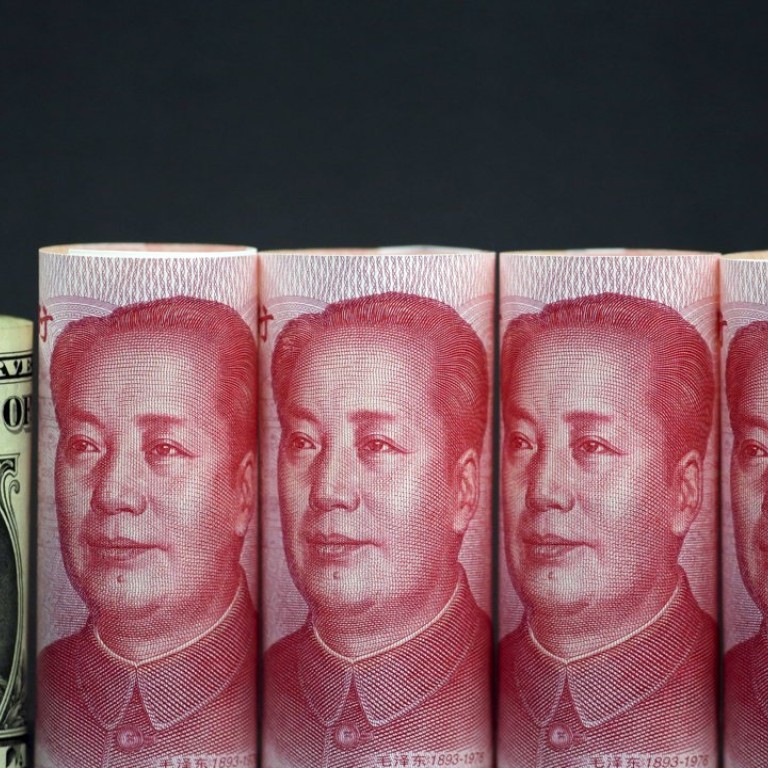
Update | China’s offshore yuan falls sharply Friday to end three day winning streak
Traders believe yuan will continue to decline next week when mainland Chinese financial markets reopen after Lunar New Year holiday
China’s offshore yuan fell sharply on Friday after hitting a two-month high the previous session, with traders saying the downward trend for the currency may continue as they believe its rebound this week was overdone.
The offshore yuan once traded at 6.5484 to the US dollar in early trade on Friday, down 0.3 per cent from Thursday when it hit a two-month high of 6.5272. The fall ended a three-day winning streak for the currency. The offshore yuan traded at 6.5366 at 5 pm.
Most of the running in the yuan has been in overseas markets such as London, Singapore and New York because Hong Kong was closed from Monday to Wednesday for the Lunar New Year.
The currency, which has strengthened 0.51 per cent against the US dollar this week, has risen five weeks in a row. After the People’s Bank of China’s (PBOC) intervention in January, the offshore yuan has now turned around from depreciating more than 2 per cent in the first week of January to its current 0.48 per cent year-to-date gain against the US dollar.
Heng Koon How, senior currency strategist with Credit Suisse, said the strengthening of the offshore yuan this week was due to a weaker US dollar rather than action by the PBOC.
“Trading volume was relatively light this week, so I doubt there is any meaningful intervention from the PBOC,” Heng said.
“Rather, the offshore yuan’s strength is mainly because of US dollar weakness. Given the current concerns over the tightening financial conditions, the market has pushed back expectations of a Fed rate hike. As such, the US dollar was sold off virtually against every developed currency, leading to a strong rally in the euro and yen. That is why the offshore yuan was relatively stronger.”
Heng remained negative on the outlook for the offshore yuan.
“We think this offshore yuan strength is overdone. Chinese mainland equities will likely see a heavy correction lower when the market reopens on Monday and that will lead to offshore yuan weakness,” Heng said.
“In addition, the latest US$99.5 billion contraction in China’s Foreign reserves for January will likely keep global investors concerned over ongoing capital outflows from China. We reiterate our negative view of both the offshore yuan and onshore yuan and see a return in weakness next week.”
Stephen Innes, senior trader at Oanda, said the yen has strengthened immensely since late last week and this benefits other Asian currencies, including the offshore yuan, in trade against the US dollar.
“Liquidity is still very thin and news is sparse with little regional trader banter. However, I’m not expecting any surprises on the Monday PBOC fixing on the onshore yuan,” Innes said.
The offshore yuan is now trading stronger at a premium of 344 points to the onshore yuan which closed on February 5 before the Lunar New Year break at 6.5710. This is in contrast to the usual situation that sees the offshore yuan trading at a discount to the onshore yuan, with the spread hitting a record 1,400 points on January 7.
Innes said the fact that the offshore yuan was trading at a stronger level than the onshore yuan may be related to the expensive borrowing cost for offshore yuan funding as there were rumours of Chinese banks being asked to reduce lending in the offshore yuan market.
“Throttling offshore yuan liquidity will make the short offshore yuan positions very expensive to carry and less inviting to speculators,” he said.
The Hong Kong dollar traded at 7.7882 per US dollar at 5 pm on Friday, edging up 0.02 per cent from Thursday. On a weekly basis, it is up 0.03 per cent.
The local currency hit 7.8008 last week, testing the weaker end of the peg, and on January 20 traded at an eight-and-a-half -year low of 7.8294.
The currency has weakened by 0.52 per cent this year against the US dollar due to capital outflows caused by the weak stock market and the December 16 interest rate rise by the United States.

